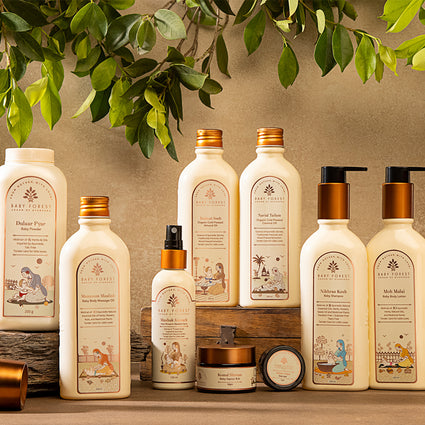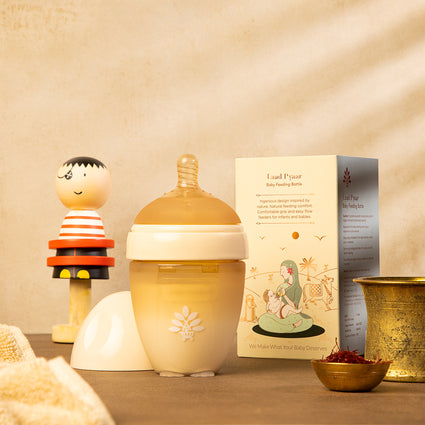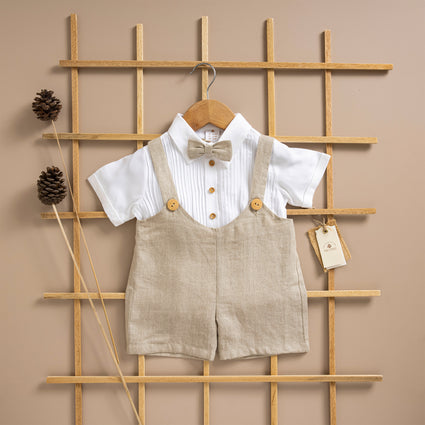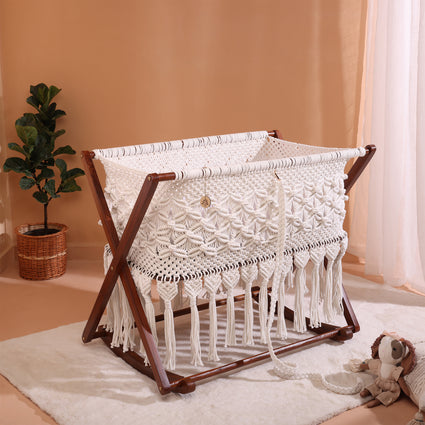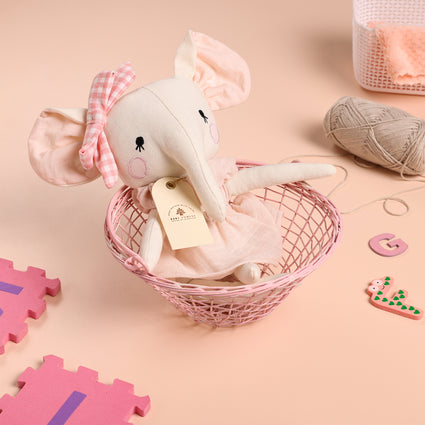Baby Care & Parenting Blogs

Understanding Your Menstrual Cycle and Ovulation
Understanding your menstrual cycle and ovulation is key to mastering fertility and health. Whether planning a pregnancy or monitoring your body, this guide breaks it down simply. From phases to tracking methods, we’ll help you navigate this natural rhythm with confidence and care.
What is the Menstrual Cycle?
The Menstrual Cycle and Ovulation define the time from the first day of one period to the first day of the next. A typical cycle lasts between 21-35 days, with 28 days being the average. Using a Period and Ovulation Tracker can simplify understanding these phases:
- Menstrual Phase: Shedding of the uterine lining, leading to bleeding (3-7 days).
- Follicular Phase: The body prepares for ovulation by developing follicles in the ovary.
- Ovulation Phase: A mature egg is released from the ovary, usually mid-cycle.
- Luteal Phase: The body prepares for pregnancy or starts a new cycle if fertilization doesn’t occur.

How to Track Your Cycle for Pregnancy Planning?
Accurately tracking your Menstrual Cycle and Ovulation is crucial for pregnancy planning. Begin by recording your cycle's start date, the first day of your period, with a Menstrual Cycle Calculator. Note cycle length, typically 21-35 days. Ovulation, when an egg is released, usually occurs 12-14 days before your next period. Monitor basal body temperature (BBT) for a slight rise post-ovulation. Observe cervical mucus changes; clear, stretchy mucus indicates fertility. Utilize ovulation predictor kits (OPKs) to detect luteinising hormone (LH) surge, signalling impending ovulation. Combine these with a Period Ovulation Tracker for accurate fertility window identification.
You Might Like This: Pregnancy Conception Calculator
What is Ovulation?
Ovulation occurs when a mature egg is released from the ovary, typically around the midpoint of the cycle. The egg survives for 12-24 hours, but sperm can live in the female body for up to five days. This means the days leading up to ovulation, tracked via a Fertile Days After Period Calculator, are also fertile and crucial for conception.
How to Calculate Ovulation?
Knowing your Menstrual Cycle and Ovulation helps in planning conception effectively. A Menstrual Cycle Calculator can estimate your cycle length easily:
- Track Your Cycle Length: Count the days from the first day of your period to the first day of the next period. A normal cycle is between 21-35 days.
- Determine Your Ovulation Day: Ovulation typically occurs about 14 days before your next period. For example, if your cycle is 28 days, ovulation occurs around day 14.
- Identify Your Fertile Window: The most fertile days, pinpointed by a Fertile Days After Period Calculator, are the five days leading up to ovulation and the ovulation day itself.

Signs of Menstrual Cycle and Ovulation
Recognizing ovulation signs is key to predicting your fertile window. During this time, you may notice several changes in your body. Cervical mucus typically becomes clear, stretchy, and slippery, resembling egg whites—a sign tracked by the Best Period and Ovulation Tracker. After ovulation, your basal body temperature (BBT) may show a slight rise. Ovulation test kits can also be used to detect the surge in luteinizing hormone (LH), which triggers ovulation. Some women may experience mild pelvic pain, known as Mittelschmerz, lasting a few hours to a day. Additionally, increased libido and energy levels are common indicators of ovulation.

Using an Ovulation Calculator
An ovulation calculator estimates your most fertile days based on your menstrual cycle ovulation. While it provides a general idea, combining it with physical ovulation signs and a Period Ovulation Tracker enhances accuracy. These calculators, especially an Ovulation Calculator for Irregular Periods, are useful but should be used alongside other tracking methods for the best results.

How Accurate is Ovulation Prediction?
Ovulation prediction methods vary in accuracy depending on your menstrual cycle and ovulation patterns. Here’s a breakdown with tools like the Most Accurate Period Tracker Online:
Ovulation Calculators: Provide estimates but do not guarantee exact ovulation timing,as cycle lengths can fluctuate.
Basal Body Temperature (BBT): About 75-80% accurate in confirming ovulation after it has occurred.
Cervical Mucus Observation: Can be 70-90% accurate when tracked consistently with a Period and Ovulation Tracker.
Ovulation Predictor Kits (OPKs): Detect LH surges and are about 99% accurate in predicting ovulation within 24-36 hours. Using multiple methods, including an Ovulation Calculator for Irregular Periods, increases reliability. If cycles are irregular, consulting a doctor is recommended.
The Role of Hormones in Ovulation
Hormones are vital as they regulate your menstrual cycle and ovulation seamlessly. . Follicle-stimulating hormone (FSH) initiates egg development within the ovaries. Luteinizing hormone (LH) then triggers the release of a mature egg. Estrogen levels increase before ovulation, resulting in fertile cervical mucus—insights you can gain from the Best Period and Ovulation Tracker. Post-ovulation, progesterone rises, preparing the uterus for potential pregnancy. The optimal time for conception is within the fertile window, which spans approximately six days: the five days preceding ovulation and the day of ovulation itself. Intercourse during this period significantly enhances pregnancy likelihood. Sperm can survive in the female reproductive tract for up to five days, making intercourse before ovulation advantageous.
How to Improve Ovulation Naturally?
Maintaining a healthy menstrual cycle and ovulation involves several key practices. Consume a balanced diet rich in essential vitamins and minerals, including folic acid, zinc, and iron. Effectively manage stress, as elevated stress levels can disrupt hormone balance and postpone ovulation. Maintain a healthy weight, as both underweight and overweight conditions can negatively impact ovulation—track progress with the Most Accurate Period Tracker Online. Engage in regular, moderate exercise to support hormonal equilibrium. Consult a healthcare professional if you experience irregular, excessively painful, or absent menstrual cycles for several months, as these may indicate hormonal imbalances or underlying fertility-affecting conditions. Additionally, seek medical advice if you have been attempting to conceive for over a year, or six months if you are over 35.
Conclusion
Tracking your menstrual cycle and ovulation is essential for understanding fertility. Whether If you are planning to conceive or simply monitoring your health, knowing your fertile window can be highly beneficial. Menstrual cycle calculators and tracking tools provide helpful estimates, but combining multiple methods ensures the best accuracy. If you experience irregularities or difficulty determining ovulation, seeking medical advice is recommended.

Why Is Breastfeeding Painful in the First Few Weeks? Caus...
Breastfeeding is a special journey for both mothers and babies. It's a time of bonding, nourishment, and closeness. However, for many mothers, the first few weeks of breastfeeding can come with unexpected challenges, especially pain. If you're experiencing discomfort, know that you're not alone. Breastfeeding pain is common initially, but it's usually temporary and can be managed with the right approach.
In this blog, we'll explore why breastfeeding can be painful in the early weeks, what causes it, and, most importantly, how you can ease the discomfort while continuing to nourish your baby.
Why Does Breastfeeding Hurt Initially?
Breastfeeding pain in the first few weeks is often due to your body adjusting to this new process. Here's why it happens:
-
Learning Curve for Both Mother and Baby
Breastfeeding doesn't always come naturally. Both you and your baby are learning how to latch and feed effectively. This process can sometimes cause pain until both of you get the hang of it.
-
Tender Nipples
Your nipples may feel tender or sore as they adjust to frequent feeding. This is especially common if your baby isn't latching correctly, leading to excessive friction.
-
Engorgement
When your milk comes in, your breasts might feel swollen, firm, and tender. This is called engorgement, and it can make breastfeeding uncomfortable.
-
Let-Down Reflex
The let-down reflex is the release of milk triggered by your baby's sucking. While it's essential for feeding, some mothers feel a tingling or sharp pain during let-downs, especially in the early weeks.
-
Blocked Ducts or Mastitis
If a milk duct becomes blocked or infected (mastitis), it can cause pain and inflammation. This is less common but can occur if milk isn't being emptied properly.
Common Causes of Breastfeeding Pain
Understanding the root cause of your pain is the first step in addressing it. Here are some common reasons why breastfeeding may hurt:
-
Poor Latch
If your baby doesn't latch deeply onto your breast, they may only suck on the nipple instead of the areola. This can lead to cracked, sore nipples.
-
Tongue-Tie or Lip-Tie
Some babies are born with tongue-tie or lip-tie, which can make it difficult for them to latch properly. This may cause pain for the mother and frustration for the baby.
-
Thrush
Thrush is a fungal infection that can develop in your baby's mouth or on your nipples, leading to pain during and after feeding. It's characterized by redness, itching, or white patches.
-
Oversupply of Milk
An oversupply can cause forceful let-downs, making feeding uncomfortable for your baby and resulting in painful latching for you.
-
Incorrect Breastfeeding Position
The way you hold your baby can impact their latch. An incorrect position might make feeding more difficult and painful.
Solutions to Ease Breastfeeding Pain

The good news is that breastfeeding pain in the early weeks is usually manageable with a few adjustments and tips. Here's how you can find relief:
-
Focus on a Proper Latch
A good latch is key to pain-free breastfeeding. Make sure your baby's mouth covers the nipple and most of the areola. If it hurts, gently break the suction and try again. Don't hesitate to seek help from a lactation consultant if you're struggling.
-
Try Different Positions
Experiment with breastfeeding positions to find one that works for you and your baby. Popular options include the cradle hold, football hold, and side-lying position. Each position offers a different angle for latching, which might help reduce pain.
-
Use Nipple Creams or Oils
Applying a lanolin-based cream or coconut oil after feeding can soothe sore nipples. These are safe for your baby and help promote healing.
-
Warm Compresses for Engorgement
If engorgement is causing discomfort, apply a warm compress or take a warm shower before feeding. This helps soften the breast tissue and encourages milk flow.
-
Cold Packs for Swelling
After feeding, use a cold pack to reduce swelling and relieve pain. A chilled cabbage leaf can also work wonders for engorged breasts.
-
Empty Your Breasts Fully
Ensure that your baby empties one breast before switching to the other. This prevents blocked ducts and reduces the risk of mastitis.
-
Address Tongue-Tie or Lip-Tie
If you suspect your baby has a tongue-tie or lip-tie, consult your paediatrician. A simple procedure can correct the issue and improve latching.
-
Use a Breast Pump If Needed
If feeding directly is too painful, consider using a breast pump temporarily to express milk. This allows your baby to continue receiving breast milk while giving your nipples time to heal.
How to Make Breastfeeding More Comfortable
Creating a comfortable environment can make a big difference. Find a quiet, cosy spot for feeding, use supportive pillows, and wear nursing bras for added comfort. Don't be afraid to ask for help from family or friends during this time—it's okay to need support.
Conclusion
Breastfeeding is as much a learning experience for you as it is for your baby. While the first few weeks might bring some discomfort, remember that it's temporary, and with patience and practice, it gets easier. Every feed strengthens your bond with your baby and provides them with the best nutrition possible. Take it one day at a time, and don't hesitate to seek help when needed.
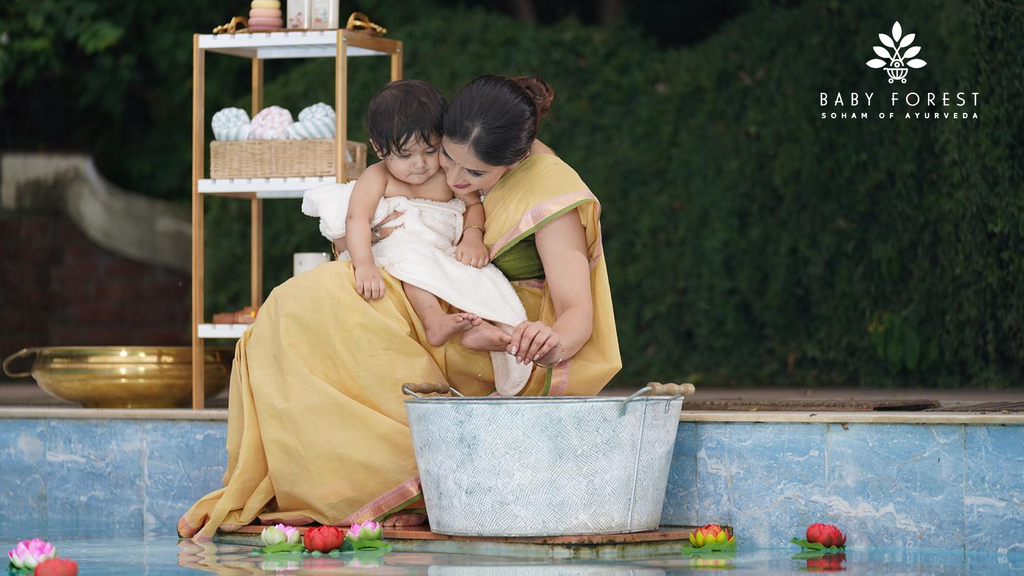
Celebrate Motherhood with Baby Forest: The Best Baby Prod...
Mother's Day is a time to celebrate and appreciate the incredible women who have shaped our lives with their love and care. For new moms, nothing is more special than providing the best care for their newborns. One way to make this journey easier is by offering high-quality baby care products that ensure the best for their little ones. Baby Forest understands this and offers a range of natural baby care products inspired by the ancient principles of Ayurveda, ensuring both mother and baby receive the gentle, nurturing care they deserve.
If you're looking for the best baby care products for newborns, here are six essential items from Baby Forest's range that every new mom should have for their little ones.
Must Have Baby Care Products
-
Shampoo
Babies have delicate scalps and sensitive skin, so it's crucial to choose the right baby skin care products. A sulfate-free and paraben-free shampoo is ideal for gently cleaning and nourishing your baby's scalp. Harsh chemicals can cause irritation, so opting for a natural baby shampoo that hydrates and strengthens hair is important.
We recommend Baby Forest's Nikhrae Kesh Shampoo, which is rich in Brahmi and Hibiscus leaf extracts, known for strengthening hair roots and promoting scalp hydration. This is a perfect addition to your newborn baby care products list, ensuring your baby's hair stays soft and healthy.
-
Body Massage Oil
An essential part of baby skincare is daily massages, and nothing beats the benefits of a good baby massage oil. Massaging your baby not only promotes relaxation but also aids in muscle development and improves circulation. Ayurvedic oils are particularly effective due to their natural healing properties.
For this, try Baby Forest's Maasoom Maalish Baby Body Massage Oil, which contains Sesame Oil and Rosemary to support bone and muscle development. This oil is a key item in any baby care products kit, offering therapeutic benefits that nourish and soothe your baby's skin.
-
Diaper Rash Cream
With the warmer months approaching, babies are more prone to diaper rashes due to sweating. Diaper rash creams are vital in keeping your baby's skin rash-free and comfortable. Look for creams made from natural ingredients that are gentle on sensitive skin.
We suggest Baby Forest's Komal Kawach Diaper Rash Cream, enriched with Aloe Vera and Harachampaka Madanah, which not only soothes irritated skin but also provides a natural barrier against future rashes. It's a must-have on your newborn baby care products list to ensure your baby's comfort all summer long.
-
Baby Soap
During hot summer months, it's essential to use a natural baby soap that cleanses without stripping the skin of its natural oils. A gentle, sulphate-free soap will keep your baby's skin hydrated and free from irritation.
Baby Forest's Nirmalya Snan Natural Baby Soap is a perfect choice, formulated with Jojoba Oil, Castor Oil, and Rosehip Oil to maintain your baby's soft, supple skin. Adding this soap to your baby care products list ensures your little one's skin remains cool and nourished, even during the heat.
-
Feeding Bottle
A baby feeding bottle is a thoughtful and practical essential for every new mom. It allows babies to feed comfortably, whether they are breastfed or formula-fed. When choosing a feeding bottle, prioritize safety, ease of cleaning, and baby-friendly designs.
Check out Baby Forest's BPA-Free Laad Pyaar Feeding Bottle, which is made from high-quality, non-toxic materials. It's the perfect feeding solution for your baby and a must-have item in any baby care products kit.
-
Baby Toys
Toys aren't just for fun—they play a vital role in a baby's cognitive and motor development. Whether it's interactive toys or simple stacking blocks, providing your baby with safe, educational toys helps stimulate their senses and encourages exploration.
At Baby Forest, you'll find a wonderful collection of toys for 1-year-olds that are designed to boost cognitive development and motor skills. From beach buckets to stacking toys, there's something for every curious little mind.
This Mother's Day, show your love and appreciation by choosing Baby Forest's baby care products, ensuring that both moms and their little ones receive the very best.


How to Plan the Perfect Baby Shower?
A baby shower is a special celebration for the soon-to-arrive bundle of joy, but it's also an occasion to honour the mom-to-be. Whether you're organizing the baby shower for a close friend, family member, or yourself, it's a day filled with love, laughter, and lots of excitement. But how do you ensure that the event is memorable and perfect? Planning a baby shower can feel like a big task, but with a few thoughtful steps, you can create a fun, heartwarming, and stress-free experience for everyone.
Here's a complete guide to planning the perfect baby shower, filled with tips and ideas to make the day truly special.
Steps to Planning the Perfect Baby Shower
-
Choose the Right Date and Time
One of the first things to do is decide on the date and time of the baby shower. Typically, baby showers are held during the third trimester of pregnancy, around the seventh or eighth month. However, it's important to check with the mom-to-be and see what works best for her schedule and comfort.
The timing of the event is also key. Baby showers usually take place in the afternoon, so people have enough time to enjoy the party without feeling rushed. A good time to host the event is between 2 PM and 5 PM—it's late enough for lunch but early enough for guests to head home without it getting too late. -
Decide on the Guest List
The next step is to create a guest list. This should be done in collaboration with the mom-to-be, as she'll know who she wants to invite. Whether it's an intimate gathering with close family and friends or a larger celebration, the number of guests will influence other decisions like venue, food, and activities.
Some important people to consider are close family members, childhood friends, work colleagues, and even distant relatives. Baby showers in India often include multi-generational women—moms, aunts, grandmothers—and can sometimes turn into a big celebration. -
Choose the Perfect Venue
Choosing the right venue depends on the number of guests and the type of baby shower you're planning. For a small, intimate gathering, hosting the baby shower at home is a cosy and personal option. If you're inviting a larger group, you may want to consider renting a venue such as a banquet hall, restaurant, or community center.
If you're looking for a unique touch, outdoor venues like gardens or terraces work well, especially if the weather is nice. Just make sure the venue is easily accessible for the mom-to-be and comfortable for guests. -
Decide on a Theme
A baby shower theme can add a fun and personal touch to the celebration. It doesn't need to be complicated; even a simple theme can make the party more memorable. Some popular baby shower themes include:Cultural themes:
In India, cultural elements like traditional godh bharai ceremonies can be included in the baby shower, adding a rich, spiritual touch.Character themes:
You can go for cartoon characters, animals, or storybook characters that the parents-to-be love.
Decorate the venue with balloons, streamers, flowers, and centerpieces that match the theme. Don't forget to add personal touches, such as photos of the mom-to-be and her journey through pregnancy. -
Send Out Invitations
Once the date, venue, and theme are set, it's time to send out invitations. These days, digital invitations via WhatsApp or email are common and convenient. However, if you want a more traditional touch, you can go for printed invitations that reflect the theme of the baby shower.
Be sure to send out the invites at least 2-3 weeks in advance, giving guests enough time to RSVP and plan accordingly. -
Plan the Menu
Food is an essential part of any Indian celebration, and the baby shower is no different! The menu can range from a simple selection of snacks and refreshments to a more elaborate spread, depending on the time of the event and the preferences of the guests.
Some popular baby shower food ideas include:Finger foods:
Mini sandwiches, samosas, paneer tikka, vegetable rolls, and fruit platters.Main dishes:
Depending on the time, you could serve a buffet with Indian favourites like biryani, pulao, chole, or paneer dishes.Desserts:
A must-have for any celebration, desserts can include cupcakes, sweets like gulab jamun or kaju katli, or even a themed baby shower cake.
Make sure to cater to any special dietary needs the mom-to-be might have, such as avoiding spicy foods or providing pregnancy-friendly snacks. -
Plan Fun Games and Activities
No baby shower is complete without a few fun games and activities to keep the guests entertained. Games can also help break the ice, especially if not everyone knows each other well. Here are a few baby shower game ideas:
Guess the Baby's Birth Date: Guests predict the baby's arrival date and write it down. Whoever gets closest wins a prize!Diaper Changing Race:
Set up a fun race where guests compete to see who can change a diaper on a baby doll the fastest.Baby Name Game:
Guests write down as many baby names as they can think of in a certain amount of time. You can even limit it to names starting with a specific letter.Advice for the Mom-to-Be:
Have a station where guests can write down advice or wishes for the mom-to-be. It's a fun keepsake she can look back on.
Prizes for the winners can include small gifts like chocolates, scented candles, or even cute baby-themed items. -
Get Creative with Gifts
A baby shower isn't complete without gifts for the mom-to-be and the baby. If you're hosting the event, you can gently guide the guests towards practical and meaningful gifts. Some popular gift ideas include:Baby essentials:
Diapers, clothes, blankets, and baby care products.Keepsakes:
Personalized baby memory books or photo albums.Gift hampers:
These can include baby care sets, soft toys, or pampering kits for the mom-to-be.Unique experiences:
Consider gifting a photoshoot session for the mom and baby or a maternity spa day. -
Plan Thoughtful Party Favors
Party favours are a lovely way to thank guests for coming and celebrating the mom-to-be. Favours don't need to be extravagant; something small and thoughtful can make a big impact. Ideas include:
Customized cookies or candies wrapped in cute baby-themed packaging.
Miniature plants or succulents.
Scented candles with a thank-you tag.
Personalized keychains or trinkets.
Conclusion
Planning the perfect baby shower is about making the day special, not just for the mom-to-be but for everyone attending. While it's easy to get caught up in decorations and themes, what truly matters is creating an atmosphere of love and support for the expecting mom. The baby shower is a celebration of life, community, and the journey ahead for the new parents.
As you plan, remember to keep things flexible and open to adjustments. It's okay if everything doesn't go perfectly as planned. What will be remembered most are the moments of laughter, love, and the connections made on this special day. So, enjoy the process, and let the baby shower be filled with warmth and joy!

Essential Oils Benefits for Babies: A Complete Guide for ...
The arrival of a newborn is a beautiful and transformative experience that inspires you to seek the best ways to care for your precious bundle of joy.

Breastfeeding Twins: A Comprehensive Guide for New Moms
Welcoming twins into your life is a joyous occasion, but it can also be overwhelming, especially when it comes to breastfeeding. Breastfeeding twins presents unique challenges and requires special techniques, but with the right information and support, you can successfully nourish your babies. This comprehensive guide will cover everything you need to know about nursing twins, from twin breastfeeding positions to creating a twin-feeding schedule.
Benefits of Breastfeeding Twins
Breastfeeding offers numerous benefits for both mothers and babies. For twins, it provides the essential nutrients needed for growth and development while also promoting a strong immune system. For mothers, breastfeeding helps in postpartum recovery and strengthens the bond with each baby. Additionally, it is economical and convenient, eliminating the need for formula and bottle preparations.
Getting Started with Breastfeeding Twins
How to breastfeed twins can be daunting at first, but with some preparation and patience, you can establish a successful breastfeeding routine. Here are some initial steps to help you get started:
-
Seek Early Support
Contact a lactation consultant or join a support group for mothers of twins. Professional guidance can be invaluable in addressing specific concerns related to breastfeeding twins. -
Create a Comfortable Feeding Area
Set up a dedicated space for breastfeeding with comfortable seating, pillows for support, and easy access to water, snacks, and entertainment.
-
Practice Makes Perfect
Initially, you might find it challenging to position both babies correctly. Practice different twin breastfeeding positions until you find what works best for you and your babies.
Twin Breastfeeding Positions
Finding the right twin breastfeeding positions is crucial for comfort and efficiency. Here are some popular positions to consider:
-
Football Hold
This position involves holding each baby under your arm, with their legs pointing towards your back. It provides excellent support and allows you to control their heads easily. -
Cradle Hold
In this position, each baby is held across your lap, with their heads resting in the crook of your arms. This is a natural and comfortable position for many mothers. -
Double Clutch
Similar to the football hold but with both babies positioned on the same side. This can be useful if you have limited space or need to free up one hand. -
Upright Hold
Suitable for older babies who can support their heads. Both babies sit on your lap facing you, which can be less tiring for your arms.
Experiment with these positions to determine what feels most comfortable and effective for you and your twins.
Establishing a Twins Feeding Schedule
Creating a consistent twin feeding schedule is essential for managing your time and ensuring both babies are well-fed. Here are some tips to help you establish a schedule:
Synchronize Feedings
Try to feed both babies at the same time. This can save you a lot of time and energy compared to feeding them separately.
Track Feedings
Use a notebook or an app to record feeding times, durations, and which breast each baby is nursed from. This helps ensure both babies receive equal feeding time and allows you to monitor their intake.
Be Flexible
While a schedule is helpful, it's important to remain flexible. Babies' needs can change frequently, especially during growth spurts. Adapt your schedule as needed.
Managing Milk Supply
A common concern for mothers of twins is whether they will produce enough milk. Here are some tips to boost and maintain your milk supply:
Frequent Nursing:
The more you nurse, the more milk your body will produce. Aim to feed your babies every 2-3 hours or on demand.
Stay Hydrated and Nourished:
Drink plenty of water and eat a balanced diet rich in nutrients to support milk production.
Pumping:
Consider pumping between feedings to stimulate milk production and build a supply of expressed milk.
Overcoming Challenges
Breastfeeding twins can present unique challenges, but with patience and perseverance, you can overcome them. Here are some common issues and how to address them:
Latch Issues:
If one or both babies have difficulty latching, seek help from a lactation consultant. They can provide techniques to improve latch and ensure effective feeding.
Sore Nipples:
Use lanolin cream or nipple shields to soothe sore nipples. Ensure proper latch to minimize discomfort.
Fatigue:
Caring for twins is exhausting. Rest whenever possible, and don't hesitate to ask for help from family and friends.
Remember, every mother and baby pair is unique, so find what works best for you and seek support when needed. With the right approach and mindset, you can make nursing twins a positive and fulfilling experience.

Celebrating the Energy of Motherhood: An Essence of Joy &...
Motherhood is a beautiful and lifelong journey filled with love, joy, and unforgettable moments. Celebrating motherhood means acknowledging the hard work, dedication, and love that mothers pour into raising their children. It's a celebration of the unique bond between a mother and her child, a connection that starts from the very first heartbeat and lasts a lifetime.
Embracing New Motherhood
For new moms, the journey into motherhood is filled with a mix of emotions, from overwhelming joy to occasional uncertainty. These first few months are crucial as they adapt to their new roles and learn about their baby's needs and personalities. Celebrating new mothers involves recognizing their initial steps into parenting, which are often as challenging as they are rewarding. Providing support, understanding, and encouragement during this transformative period is essential in helping them feel confident and cherished in their new role.
The Unique Bond Between a Mother and Child
The relationship between a mother and her child is unlike any other. From the moment of birth, mothers and their children share a deep emotional connection. This bond is built on endless moments of care, affection, and understanding. A mother often understands her child's needs and emotions, sometimes even before the child expresses them. This unique connection is not just about biological ties; it's about the countless sacrifices, endless support, and unconditional love that define motherhood.
The Challenges of Motherhood
Being a mother is one of the most rewarding roles, but it's not without its challenges. Mothers often juggle multiple responsibilities, from managing the household and caring for their children to maintaining a career and personal interests. Despite these challenges, mothers consistently demonstrate resilience and strength. Their ability to manage these tasks contributes greatly to the essence of motherhood, showing their children a model of perseverance and dedication.
How to make Mother's Day Special?
Celebrating mothers should be more than just a one-day affair; it should be a continuous appreciation of all they do. Here are a few ideas to make mothers feel special:
-
Spend Quality Time Together:
Organize a day out or a special meal at home. The gift of time is often the most cherished. -
Create a Handmade Gift:
A personalized gift, like a handmade card or a photo album, can hold special meaning. -
Gift Certificates:
Whether it's for a spa day, a favorite store, or a cooking class, a gift certificate can give mothers a much-deserved break or a chance to pursue their interests. -
Help Out:
Offer to take over some of her daily tasks. Sometimes, the best gift is a day off from usual responsibilities.
Gift Ideas for New Moms
When thinking of gifts for new moms, consider items that add comfort to their lives or simplify their new routines:
-
Nursing Pillows and Accessories:
These can offer much-needed comfort and support during feeding times. -
Pampering Kits:
A basket filled with spa essentials like lotions, bath salts, and soothing teas can offer a new mom a peaceful retreat at home. -
Baby Cradle:
A comfortable and safe cradle can be a sanctuary for a newborn, ensuring they have a cozy place to sleep. -
Feeding Bottles:
High-quality feeding bottles that are easy to clean and safe for the baby can be a practical and thoughtful gift. -
Baby Clothes:
Soft, comfortable, and easy-to-wear baby clothes that makes frequent changes easier can also be a fantastic gift option.
The Importance of Mothers in Family and Upbringing
Mothers play a crucial role in the upbringing of children and in the family's stability. They often serve as the heart of the household, offering emotional support and guidance to everyone. The influence of a mother in her child's life is profound and far-reaching, affecting their emotional growth, learning, and overall development.
The essence of motherhood is made up of joy, challenges, and an unbreakable bond between mother and child. Celebrating this essence not only honors mothers but also acknowledges their fundamental role in shaping the next generation. So, take the time to celebrate and appreciate the mothers in your life, not just on special occasions but every day. Their impact is priceless, and their role is irreplaceable.

Pregnancy Hair Loss: What Moms Need to Know
Pregnancy brings a whirlwind of emotions and transformations, with some shifts being unexpectedly striking. One such change that doesn't get as much attention is hair loss during and after pregnancy. If you're experiencing this, know that you're not alone. This article is here to guide you through understanding pregnancy-related hair loss, why it happens, and how to manage it.
Understanding Hair Loss in Pregnancy
Most people picture pregnancy as a time when women have thick, luscious hair. And it's true, during pregnancy, many women find their hair feels fuller. But what happens after the baby arrives can be quite the opposite. Some new moms start to notice their hair falling out in clumps. This can be alarming, but it's a common experience.
Why Does Hair Loss Happen During and After Pregnancy?
The main culprit behind hair loss before, during, or after pregnancy is hormones. Throughout pregnancy, your body undergoes a significant increase in estrogen and progesterone levels. These hormones can cause your hair to remain in a growth phase, leading to less shedding and thicker hair.
However, after childbirth, your hormone levels drop dramatically. This sudden change can shock your hair follicles, pushing more hair into the resting phase. Several months following the birth of your baby, you may observe an unusual amount of hair shedding. This phenomenon is referred to as postpartum hair loss, also known as telogen effluvium.
What Can You Do About Hair Loss During Pregnancy?
First and foremost, it's important to understand that this phase is temporary. Most women see their hair return to its pre-pregnancy condition within 6 to 12 months after childbirth. However, there are steps you can take to manage hair loss and care for your hair during this time.
-
Maintaining a Healthy and Nutritional Diet
For your hair to grow robust and healthy, it requires essential nutrients. Make sure your diet includes a whole lot of vitamins and minerals conducive to hair growth, like iron, zinc, vitamin D, and proteins. Consuming a well-rounded diet benefits not just hair loss management but also contributes significantly to your comprehensive recovery post-pregnancy.
Related Read - What to Eat When Pregnant: Your Ultimate Guide to a Healthy Pregnancy Diet -
Be Gentle with Your Hair
Try to minimize stress on your hair. Avoid hairstyles that pull tightly on your scalp, like ponytails or braids. When brushing your hair, use a wide-toothed comb to gently detangle your hair, reducing breakage. -
Choose the Right Hair Care Products
You can look for shampoos and conditioners that are designed for thinning hair as they can help make your hair appear fuller. Also, avoid heavy styling products, as they can weigh down your hair and make hair loss more noticeable.
-
Consider Supplements
After consulting with your healthcare provider, you might consider taking supplements to support hair growth. Vitamins like biotin and vitamin E have been known to help, but it's important to get professional advice before starting any new supplement, especially if you are breastfeeding.
-
Manage Stress
Caring for a newborn is often filled with stress, and this can further intensify hair loss. It's important to discover methods to unwind and minimize stress levels. Practices such as meditation, light physical activity, or reaching out for support from friends and family can have a substantial impact. -
Consult with a Professional
If hair loss is causing you worry, it's important to consult with a healthcare provider or dermatologist. They can provide advice and, if needed, suggest treatments or diagnostic tests to verify that no severe underlying condition is causing your hair loss.
When to See a Doctor?
Although postpartum hair loss is typical, unusually heavy shedding may indicate a deeper health concern, like thyroid disorders or anaemia. If you notice your hair loss is severe or accompanied by other symptoms, it's important to seek medical advice.
Pregnancy-related hair loss can be a distressing experience, but it's a temporary and normal part of the postpartum period for many women. By understanding why it happens and taking steps to care for your hair and health, you can navigate this change more comfortably. Remember, this phase will pass, and your hair will gradually return to its normal cycle. In the meantime, focus on your well-being and enjoying time with your new baby.
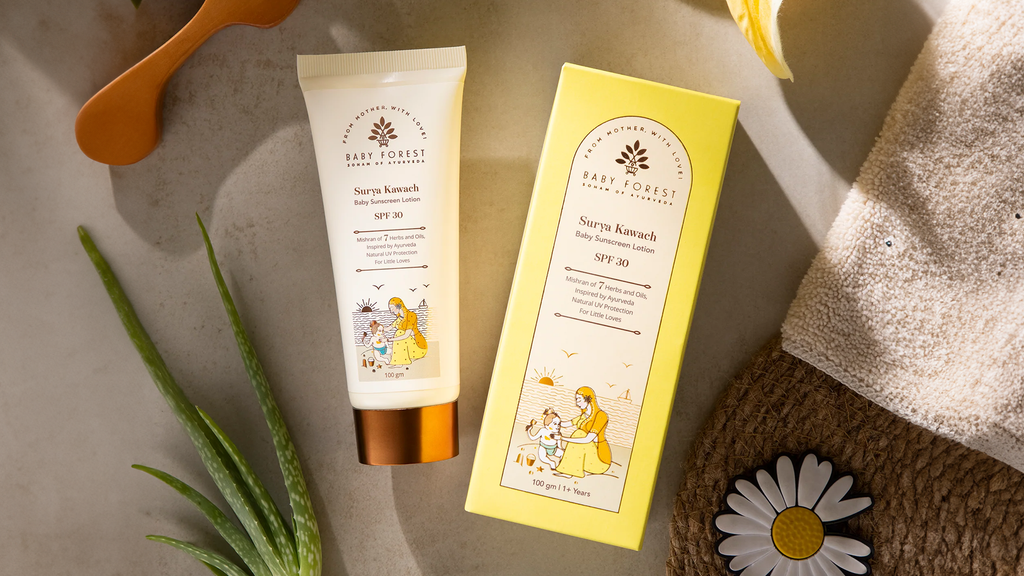
The Importance of Sun Protection: Why Baby Sunscreen is a...
In the warm embrace of sunlight, babies experience not just the joy of being outdoors but also the potential risk of sun damage to their delicate skin. Understanding the importance of sun protection for infants is crucial for ensuring their well-being. This article will delve into the reasons why baby sunscreen is a must, covering various aspects to enhance your awareness and guide you in safeguarding your little ones.
Baby Skin Vulnerability to Sun Damage:
To comprehend the significance of sun protection, it's essential to recognize the vulnerability of baby skin. Infants have thinner, more delicate skin that is highly susceptible to harmful UV rays. Unlike adults, their skin has not fully developed the natural defenses needed to shield them from the sun's impact.
Harmful Effects of Sun Exposure on Babies:
Sun exposure can have severe consequences on a baby's skin. From sunburns to long-term damage, the risks are substantial. UV rays have the capability to infiltrate the skin, potentially causing concerns like dehydration, heatstroke, and an elevated susceptibility to skin cancer in the future. It's imperative to address these potential hazards through effective sun protection measures.
Why Regular Sunscreen Isn't Suitable?
Not all sunscreens are made equal, and sunscreens meant for adults may not be suitable for baby skin. Chemical ingredients found in some sunscreens can be harsh, causing irritation and allergic reactions. Understanding the characteristics of baby sunscreen becomes crucial to ensure optimal protection without compromising safety.
Characteristics of Baby Sunscreen:
Tailored to the distinctive requirements of infant skin, baby sunscreens stand out for their specialized formulation. These sunscreens are often infused with potent natural ingredients such as Seabuckthorn Oil, Carrot Oil, Red Raspberry Seed, and other beneficial herbs and oils. This unique blend not only delivers effective natural sun protection but also contributes to the overall well-being of the baby's delicate skin.
In addition to their natural composition, these sunscreens prioritize gentleness, employ a nongreasy formula, and are suitable for daily use that shields against UV rays without causing irritation. The inclusion of Seabuckthorn Oil, Carrot Oil, and Red Raspberry Seed adds an extra layer of nourishment, ensuring that the baby's skin remains soft and hydrated after application.
How to Apply Baby Sunscreen Lotion?
To apply the Baby Forest Surya Kawach Sunscreen Lotion effectively, start by dispensing a small amount onto your palms. Gently rub the lotion in your hands to ensure even distribution. When applying to your baby's face and body, pay special attention to areas such as the cheeks, neck, and ears. To achieve the best outcome, it is advisable to apply the Baby Forest Surya Kawach Sunscreen Lotion to moistened skin. This helps in seamless absorption and enhances the effectiveness of the sunscreen.

Tips for Sun Protection on Adventures:
Adventurous outings with your little one require extra precautions and these additional measures contribute to a safer and more enjoyable outdoor experience.
-
Choose the Right Time for Outings:
When planning outdoor activities with your baby, try to schedule them during the early morning or late afternoon when the sun's intensity is lower. This reduces the risk of exposure to harsh midday sunlight. -
Opt for Shade Solutions:
When outdoors, look for shaded areas or create your own shade with a stroller canopy, a baby sun tent, or a portable umbrella. This ensures a cool and protected environment for your baby to enjoy.
-
Stay Hydrated:
Hydration is crucial, especially during sunny days. Keep your baby well-hydrated by offering fluids regularly. If your baby is still breastfeeding, ensure they are nursing adequately, and if they've started solids, offer water in a sippy cup. -
Cooling Accessories:
Consider using cooling accessories like baby-friendly cooling pads or towels to keep your little one comfortable in the heat. These accessories can be especially useful during warmer weather. -
Be Mindful of Hot Surfaces:
Be cautious of hot surfaces, such as playground equipment, car seats, or sand, that can become uncomfortably warm in the sun. Check surface temperatures before placing your baby down to avoid burns or discomfort.
-
Monitor Sunscreen Expiry Dates:
Check the expiration dates on your baby's sunscreen lotion regularly. Expired sunscreen may lose its effectiveness, compromising the level of protection it offers. Replace it promptly to ensure continuous safety.
Conclusion
Understanding the importance of sun protection for babies goes beyond the application of sunscreen. It involves recognizing the vulnerability of baby skin, comprehending the harmful effects of sun exposure, and adopting a holistic approach to safeguarding against UV rays. By prioritizing baby sunscreen with suitable characteristics and implementing additional protective measures, parents can ensure their little ones bask in the warmth of the sun without compromising their health. Embrace the responsibility of nurturing your baby's skin, and let each outdoor adventure be a safe and joyous experience.
Why Water Wipes are a Game-Changer for Babies?
Parenthood is a journey of decisions, each of which is critical to ensure your baby's well-being. One such decision is choosing the right baby wipes, an essential item for every parent's toolkit. In recent years, water wipes have emerged as a game-changer in baby care, providing a gentle, effective solution for cleaning delicate skin. This article discusses why water wipes for newborns are becoming more popular and how they can improve your baby's comfort and health.
What are Water Wipes?
Water wipes are a minimalist answer to baby hygiene, comprising mostly purified water and aloe vera. Unlike traditional wipes, which may contain a variety of chemicals and fragrances, water wipes boast simplicity and purity, making them ideal for newborns and infants with sensitive skin.
As parents become more conscious of the products they use on their babies, the demand for safe, non-toxic options has risen sharply. Water wipes have gained popularity for their commitment to simplicity and safety, offering a no-fuss solution to parents who wish to avoid potential irritants found in conventional wipes.
Benefits of Water Wipes
The primary advantage of using water wipes is their gentleness on the baby's skin. With a composition that mimics the natural cleansing properties of water, they reduce the risk of irritation, making them perfect for daily use. Additionally, the minimal ingredients list means there's less chance of exposing your baby to harmful chemicals.
How can you use them?
The uses of water wipes extend beyond merely cleaning the baby's bottom. They are versatile enough for wiping faces, cleaning up spills, or freshening up while travelling. Their gentle nature makes them suitable for all skin types, providing a one-size-fits-all solution to various cleaning needs.
Tips for Choosing the Right Wipes for babies
When choosing baby wipes, be sure they are safe and comfortable for your baby's sensitive skin. Here are some key points to consider to ensure you're making the best choice:
Alcohol-Free:
Opt for alcohol-free wipes to prevent skin irritation. Alcohol can dry up and irritate the skin, particularly in infants or babies with delicate skin. Alcohol-free wipes maintain the natural moisture balance of your baby's skin, ensuring it remains soft and hydrated.
Hypoallergenic:
Choosing hypoallergenic wipes can significantly reduce the risk of allergic reactions. Hypoallergenic wipes are designed to be mild and contain fewer irritants or allergens that might cause redness, rashes, and other skin disorders. They are ideal for all babies, especially those with sensitive skin or eczema.
Dermatologically Tested:
Look for wipes that have been dermatologically tested. This implies that the wipes have been tested for skin compatibility and are certified as mild and safe for use on sensitive skin. Dermatologically tested wipes provide assurances that the product will cause less irritation or injury.
Soft and Gentle:
The texture of the wipes is also important. Choose wipes that are soft and gentle to the touch. Rough or textured wipes can be abrasive and uncomfortable for your baby, especially with frequent diaper changes. Soft wipes ensure that cleaning your baby is a soothing and irritation-free experience.
Reading Ingredient Labels:
Always check the ingredient list to ensure the wipes are as pure as possible. The fewer ingredients, the better.

Experiencing Motherhood for the First Time: A Precious Ph...
When a baby is born, there's also a birth of a parent. Parenthood is a beautiful yet intense time with a pinch of nervousness, overwhelming emotions, and, most importantly- a lot of learning. A woman gets to know the extremes of herself that she possesses and is never aware of. Only motherhood could do that!
The first experience of being a mother is all about "Discovering." One discovers the care that they are capable of. A selfless is born out of the self. You start putting someone else before yourself. A mother has to face many changes in all aspects of her life, including physical appearance, health, and mood. The approach to life itself turns upside down. But, at last, those sleep-deprived days and nights will all be worth the happiness when you will see the smile on that tiny little face. Here are some of the focuses that can be helpful in this crucial time.
Take It Easy:
A new mom is constantly sleep deprived. That adrenalin episode, full of energy when you feel like a wonder woman, might work for a while but are not a solution for the long term. So whenever it is possible, take a nap. Your body is still recovering and needs the best care possible. It doesn't matter if it's day or night. Frequent feeds and diaper changes are constant. Coordinate with your partner or always prefer to take a nap when your baby is asleep too.
Tough Or New?
There are different ways that a new mom copes with the all-new things around her. They have their own pace to get themselves comfortable with. Some let that slip from their recollection, and some moms are very zestful of the new beginnings and adapt to everything quickly. Meanwhile, some moms have to go through what is called postpartum depression. It is usual for a lot of mothers. But with time, With just a bit more care and support, everything falls right into place.
Rely On Your Loved Ones:
Emotional reassurance plays a vital role in the process. The bridge between difficulties and the special moments with your little one makes the experience of motherhood so pristine. Whether it's from friends and family or the inner you who is filled with joy when the baby speaks, sits, eats, walks, and giggles for the first time. This is all that serves the beauty of being a mother.
Your lifestyle might not be easy to fit in when you have a little human to look after for 24 hours. The bond might take some time or can happen on the first day you meet your baby. Both situations are normal. There's not even one aspect that you should feel pressured about. All you need to worry about is keeping a record of everything before it starts fading away because of the liveliness of the new baby and the mother.

Challenging To Manage Your Time As A New Mom? Have Some "...
Have you ever wished a day should be 30 hours long? So that you can take out some time all to yourself. As if you are always running out of time. You have to multitask even if you don't want to! Well, Ask a new mom about it. The crisis they will tell is going be concrete—a neverending saga of to-do lists. And for the working mom, the list goes on and on and on........ This blog is not about giving fancy advice for making and writing planners daily, because that will be another work to do! But here are some tips that a new mom can induce in their life to relax a bit. After all, we've got your back, new mamas!
Find Your Mom Buddies
Mom support groups are such an underrated solution. You can discuss ideas and problems with someone you can relate to! It also opens a gateway to better parenting with counseling for postpartum depression. Things that take a lot of time for a mother are more manageable when all the wonder women are together. Isn't it beautiful?
Eat Well and Sleep Well
New Moms always run short on sleep, whether it is because of breastfeeding their babies at night or being awake till they are asleep. Sleeping soundly for the ideal time is a rare task for them. Ask your partner to manage the time with you alternatively. Or a babysitter isn't a bad idea for a while to take some time out for you. A well-rested mom will be much happier and able to connect more with a baby. And eating healthy will heal both the mind and body.
No Chasing On What's there On The Internet
Let's be honest. There are neverending standard examples of being a perfect mother who knows parenting the best on the internet! It would be best to focus on the connection, not the perfection. You already know what's best for your baby. You must follow and believe in your bond with your Lil one.
Simplify And Take Out The Me-Time
Month end comes with many pending and scheduled tasks, and aligning them with a mom's life is a very hectic idea. Automate the task that is possible. Web-enabling some payments and functions will be an excellent way to take some time out. Then what, Hit the spa or book a yoga session all to yourself!
Prioritize and Divide
The daily miscellaneous tasks are the ones that create absolute chaos. Divide chores with your partner and weekly prioritize whatever you need to do first. You don't have to pen everything down to finalize, but just what's first and what can be done later will sort a lot for you.
Expectation from a mother is infinite. She has to be a role model for their children and take care of them throughout the day, from caring for their health to feeding, bathing, and playing with them. All of it requires almost the whole day. The importance of "me time" is already becoming an essential part of the fast-paced world. It works wonders for your mental health if you give yourself the space you deserve. The journey of you and your Lil one should be beautiful and not a stressful one!



